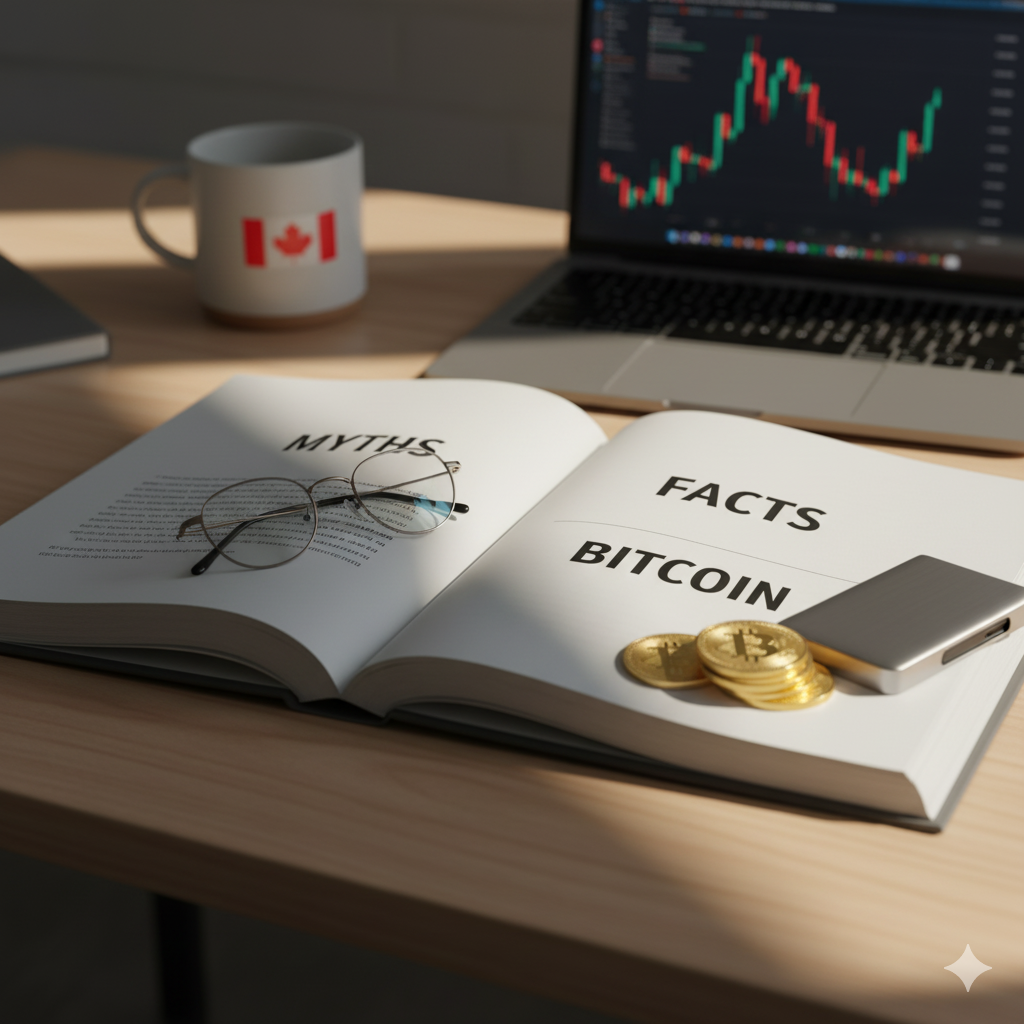Countering mainstream misconceptions
Not Everything You’ve Heard About Bitcoin Is True
Bitcoin gets a lot of attention—and a lot of misunderstanding. From media soundbites to dinner table debates, it’s easy to pick up outdated or flat-out wrong ideas about how it works.
Let’s set the record straight by tackling the most common myths holding Canadians back from learning more.
Myth #1: “Bitcoin is only used by criminals.”
Truth:
Yes, Bitcoin has been used for shady activity—just like cash, phones, and the internet. But today, the vast majority of Bitcoin transactions are legal and traceable. Public blockchains make it easier for law enforcement to track funds than with traditional cash.
Myth #2: “Bitcoin has no real value.”
Truth:
Bitcoin’s value comes from its scarcity (only 21 million coins will ever exist), decentralized security, and global demand. Just like gold or real estate, value is based on what people are willing to exchange for it—and millions are choosing Bitcoin.
Myth #3: “It’s too late to get in.”
Truth:
Bitcoin may be past its earliest growth phase, but it’s still early in global adoption. Most people don’t own any. Buying even a small amount and learning how it works is still a meaningful step today.
Myth #4: “Bitcoin is bad for the environment.”
Truth:
Bitcoin mining does use energy—but more of it now comes from renewable sources than many industries. Mining can even help stabilize grids and fund renewable projects. The conversation is evolving fast.
Myth #5: “If I lose my phone, I lose my Bitcoin.”
Truth:
Not if you’ve backed up your recovery phrase. That’s your key—not your phone. You can restore your wallet on any device, anytime, as long as you control the seed.
Myth #6: “I have to buy a whole Bitcoin.”
Truth:
Nope. Bitcoin is divisible into 100 million parts. You can buy $10 worth or even less. It’s like buying a slice of a pizza—not the whole thing.
Final Thought
Bitcoin isn’t magic—and it isn’t a scam. It’s a new kind of money with real tradeoffs, real benefits, and a learning curve. The more you explore beyond the headlines, the more sense it starts to make.
Start small. Ask questions. Keep going.




